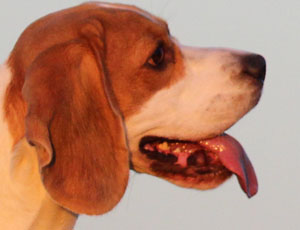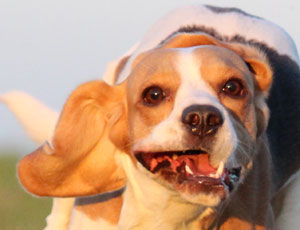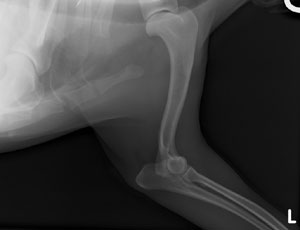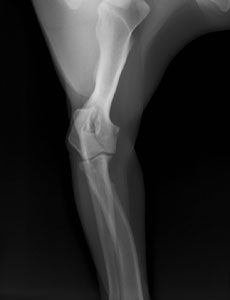The idea
My personal story
I studied biology/zoology with
emphasis on evolution theory and ethology at the University of Vienna.
I learned about genetics and population genetics in my first years, I
calculated allele frequencies with the Hardy Weinberg formula and learned
about hereditary diseases in isolated human populations and nobility.
I had the great fortune to participate at a seminary along with Helmuth
Wachtel and after talking to him about dogs and breeding I bought and
read his books.
Nevertheless when I started breeding I did this in the Austrian Kennel
Club because of the high quality standards it claims. 2003 our first Beagle
came to us, 2004 our first Cattle Dog. I am living with, working with
and learning about both breeds for some time now and from 2009 until 2016
I bred 6 litters of Australian Cattle Dogs. During this time I noticed
that the number of health tests deemed necessary to having a realistic
chance breeding a litter of healthy pups rose steadily. Each year a new
hereditary disease came into focus and in 2012 I bred a litter of dogs
affected with one until then in the breed unheard of disease: DISH (Diffuse
Idiopathic Skeletal Hyperostosis). I was very active in educating and
informing fellow breeders about DISH and in collecting samples for the
research done at the University of Bern, Switzerland.
But I came to realize that despite my best efforts and my high education
I was not able to do a simple thing: breeding healthy dogs for myself
and for the phantastic people I entrust with my puppies.
The most frustrating thing was to know how it actually could be done better,
to have the science at hand but due to the backwards kennel club regulations
and the notion of purity I was not able to do what I had to do to make
it better. I hoped for change from within, for change of the Zeitgeist,
for new, well educated breeders with high ethics to bring change. But
year after year everything stayed the same in the club.
Breeding better Beagles
This was my state of mind when I was considering breeding our young Beagle bitch. She passed all her health tests possible with flying colours, has a nice temper and great energy and working ability. But contrary to our first bitch she has traits of overtype. Her flews are really long and heavy and are keeping her under lip wet constantly. This results in discolouring of her coat and some risc for lip eczema. Also it makes her slobber when panting and loose water from the mouth after drinking. Despite having a muzzle of good length she frequently snores and had episodes of backward sneezing. At a very hot day in August after a long walk in the sun I even noticed a considerable difference in the sound of her breathing to that of my Cattle Dog bitch. Both were very hot, both panted intensive but the Beagles breath sounded wet whereas the Cattle Dog had no unusual breathing sound. For anybody with eyes to see and ears to hear this is an indication that not only the outer structures of her face are too fleshy but also inside her throat there are structural traits that potentially could lead to breathing problems.


So if I want to improve in my breeding the puppies of my bitch should have considerable less flews and tighter connective tissue both outside and inside.
I identified another problematic trait in the Beagle breed when doing the x-rays of hip, elbows and spine. They showed an unusual bend in the upper arm as well as in the lower arm - some kind of growth anomaly, a bit like Radius Curvus Syndrome, making for a short front leg that along with the long back makes for the preferred show proportions of the Beagle. I was shocked by this surprising find. The Beagle breed standard calls for a small Foxhound but the proportions are more those of a less extreme Basset Hound. I think this absurd for a breed historically bred for endurance running and hunting. And such messed up proportions become an animal welfare problem if the dog and owner play high impact sports like Agility or Frisbee - sports Beagles love to do.


I decided I vary much like my puppies to be able to move free of increased risk of injury or wear of joints and bones. Therefore I had to seek for a male compensating for these problems. But the search for a high legged, tight lips stud dog in the Austrian Kennel Club was futile. In fact I noticed that my overtyped girl was moderate compared to some of the guys. I looked into alternative populations of Beagle like laboratory Beagles or pack Beagles and I looked into other hound breeds but all of them shared the same trait of more or less loose skin.
Extrabreed Outcross
As I am an outspoken advocate of extrabreed outcrossing i.e. crossing one breed with another breed to introduce new alleles - I considered breeds of other groups as well, like terriers, pinschers, herding dogs. And suddenly the scales fell from my eyes and I noticed that I had the perfect dog right at hand - my own health tested Australian Cattle Dog stud whom I bred with athleticism and working temper in mind.
With some knowledge of genetics
the cross of those two breeds is quite predictable. It will be a short
coated, piebald dog with ticking and floppy ears. The flews and connective
tissue should be similar to a moderate hound breed and the legs should
be longer than in a Beagle as the growth anomaly seems to behave like
a recessive.
This will be an interesting dog for a dog sports person who is not overly
ambitious but wants a motivated, clever and athletic dog to have fun with.
It will not be a specialist breed but a versatile animal, suitable for
Obedience as well as Agility, Mushing sports as well as Dummytraining,
Mantrailing as well as Breitensport. It will be an aesthetically pleasing
dog for active people who like their animal to be with them outdoors for
the day and hang around together on the couch in the evenings. A dog of
the perfect size for easy transport in car or train, a dog that is small
enough to be carried on a chair lift at a mountain hike or a ski tour
but is big enough to lope alongside the bicycle for hours. A dog with
an easy maintenance coat, with no exaggerations whatsoever, a dog with
low risk of health problems and with a better chance of having a longer
lifespan that the purebred genetically impoverished parents. The dog of
my dreams.
"Versatile Hounds"
I like to put emphasis on my intention of this being only the start of a bigger project, with goals in the future beyond producing F1 crosses. I harbour the idea of a backcross into the Beagle to produce some moderate, heterozygous dogs with historical breed type but without modern problematic show-overtype. So I had to come up with a name for these dogs that indicates this is very different to yet another "doodle" designer mix. I decided for "Hound" as this is a term used for running dogs, scenthounds, sighthounds and the modern eurohounds or trailhounds. To define them better I came up with "Versatile Hound", short "V-Hound" as it describes my goal breeding for an agile active sport and hobby dog, a jack of all trades, to have fun with and to be loved by the whole family. This term will be suitable for the F1 as well as for the backcross generations to follow, until eventually they might be added as Beagle into the studbook and refresh the gene pool.